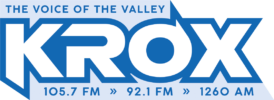RiverView Physical Therapist Christine Loff is now offering a pain relief method that is quickly gaining popularity – dry needling.
Dry needling is a safe, effective treatment involving needles that are the same size as those used in acupuncture. Trained in the specialty, Loff inserts a needle along a patient’s trigger points — the tight bands of tissue within a muscle — to promote the body’s own healing mechanisms. The practice loosens stiff muscles, eases joint pain, and improves blood flow and oxygen circulation within the body.
The results often include pain relief, faster recovery from injury, optimized sports performance, and preventing issues from becoming chronic.
FROM PATIENT TO TRAINED PROVIDER
Loff became interested in dry needling after she sought treatment for a cold/cough that lasted for an extended period of time and caused shoulder and rib pain. She found pain relief having dry needling done to the muscles surrounding her shoulder.
The Filiform needles are single-use, fine, short, stainless steel needles that do not inject fluid into the body. That is why the term “dry” is used. The needles help release the knot and relieve any muscle pain or spasms.
In addition to providing relief for muscular pain and stiffness, easing the trigger points improves flexibility and helps increase range of motion. This is why the method is often used to treat sports injuries and even fibromyalgia pain.
Relief from the following issues can also be achieved with dry needling:
- Neck pain
- Headaches
- Low back pain
- Shoulder pain
- Tennis elbow
- Carpal tunnel
- Knee pain
- Shin splints
- Planter fasciitis
- And more
DIFFERENT THAN ACUPUNCTURE
If you only compared dry needling and acupuncture with a photo, you might be stumped to identify each. Both acupuncture and dry needling use thin, stainless steel needles. For both practices, needles are inserted into the skin and both treat pain. That is where the similarities end.
Dry needling is designed to stimulate trigger points, or muscles that are irritable. It is based on Western medicine and modern science. Needles are placed into tight, painful muscles and other tissues to release tension and lower pain. Acupuncture relieves pain, discomfort or issues by opening up a person’s energy flow or chi. It is based on ancient Oriental medicine.
Loff works with each patient on a treatment plan to help determine how many sessions may be needed for optimal results. After you feel better, routine exercise and good posture help to keep the problem from coming back. If the pain starts to return, you may need to have another treatment.
Side effects may include a brief twitch or cramped feeling. Tighter muscles may twitch more. You may have some soreness in the muscle at first. This may last from 1 hour up to 2 days. Bleeding or bruising at the site is normal. Some patients may feel drowsy, tired, or dizzy for a short time.
A referral from your primary care provider is needed. Insurance may cover the technique; however, you should contact your insurance provider to determine coverage. If your insurance does not cover the service, you may pay an up-front fee of $30 per session for one to two muscle groups, after a discount, and three or more muscle groups at $64, with the discount applied.
For more information, call RiverView’s Rehab Services Department at 218-281-9463.





